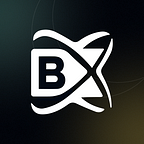Blockchain in Food Industry
Blockchain technology covers the need to certify the entire life chain of a product in an unquestionable way in cases where there are numerous parties involved and large volumes of data, as is the case in the food sector.
The blockchain technology help us,
1. Transparency of operations,
2. Contribute to food security ,
3. Reduce food waste,
4. Favor automated payments and contracts,
5. Prevent food fraud and even make food supply more sustainable.
“Blockchain in food industry is the opportunity to verify the production, storage, distribution and sale process in a safe and automated way; as well as certify the transactions made by the different parties involved (producers, distributors, etc.”
But all this is mainly translated into concrete applications that will explain in more detail:
1.Traceability,food safety and alert messages
- The blockchain makes it possible to verify the exchanges that have occurred since the food left the agribusiness complex to the supermarket shelf (what is known as “from farm to table”).
- Date, time, place and all the data related to the same product in the different stages of its route, will be recorded unchanged by the system. It should be noted that data could be collected not only from lots and inventory management, but also GPS data for location information, temperatures, etc.
- Through this tool companies can quickly locate in the supply chain, products affected by a possible contamination or any other incidence (for example, a break in the cold chain), allowing a specific withdrawal only of the lots involved.
- In addition, making these are data easily accessible can improve the ability of health authorities and consumers to take action if there is a health problem related to food.
- In the blockchain use, a company could provide all the information necessary for the crisis management or food alert, in a matter of seconds instead of days. This would translate into less sick or injured people and more confidence in the food system.
2.Transparency and Prevention of food fraud:
- With the blockchain all transactions between two parties are visible to all interested parties. Without a doubt, transparency is the star benefit of this technology.
- Unlike traditional accounting books, entries to the blockchain accounting book cannot be changed once they are sent. This makes it virtually impossible to “corrupt” the data within the supply chain and, therefore, it is much more difficult to commit fraud.
- Companies that use blockchain technology to prove transparency in their supply chains will have a kind of “insurance policy” in case a scandal shakes the industry.
What about the mistakes?
Given the immutable nature of the data in the blockchain, people may wonder what happens if an error is made. How are the erroneous data corrected? Simple: just add the correct data and blockchain technology will allow you to see what has changed but without hiding the error.
It’s like writing with a pen instead of a pencil. If we used a pencil we could erase or change data without anyone knowing. However, with the pen we can cross out the error and write next to it, but error and rectification are visible.
In a blockchain, nothing ever changes; IT UPDATES. This is why blockchain registrations are completely reliable. Errors, whether accidental or intentional, are visible and attributable.
Truthful and complete information available to consumers
So far we have focused on applications and benefits from an industry perspective, but consumers can also be favored by the use of the blockchain.
For consumers, blockchain technology can mark a before and after. This way we could verify it a few days ago when the Carrefour supermarket chain launched a product (chicken) with a scannable code label that allowed the user to have all the product information from its origin.
For consumers, the blockchain offers the necessary transparency to ensure that the food they eat is exactly what the label says they are.
Can you imagine being able to track and check with 100% certainty all the history of each food you buy in the supermarket? Well, now you can stop imagining and see for yourself because blockchain technology has made this a reality.
Simply by reading with a smartphone the QR code of the labeling of a meat, for example, data such as the date of birth of the animal, the use of antibiotics, vaccines, the mode of breeding, the location of the farm, etc., They can be easily transmitted to the consumer. A breakthrough that will undoubtedly favor the consumer confidence.
But are they all benefits?
Blockchain technology may soon become an affordable solution for both small and medium businesses and large organizations. However, it is not exempt from limitations such as those detailed below:
1. Since all the information would be available and accessible, a series of contracts between the companies participating in the chain would be necessary , to guarantee a certain level of confidentiality . The way to balance confidentiality with transparency would have to be resolved.
2. The food industry is full of secrets (think, for example, in all the stories that circulate around the secret “formula” of Coca-Cola). Blockchain technology could be problematic for many food companies that seek to preserve their competitive advantage by not advertising any type of information, such as the percentages of ingredients in their products, raw material suppliers, etc.
3. However, the most important challenge for blockchain technology remains participation. All parties must adopt the technology to make it work , or what is the same, every one of the actors in the supply chain, from the farmers to the owners of restaurants or retail stores, would have to buy it.
